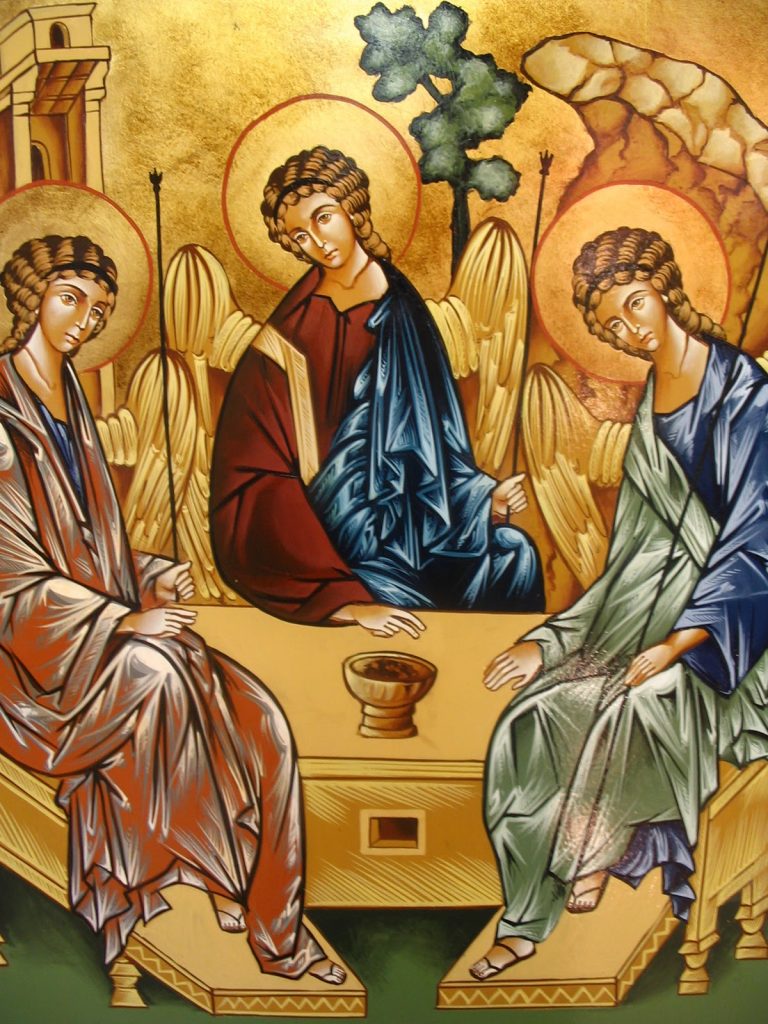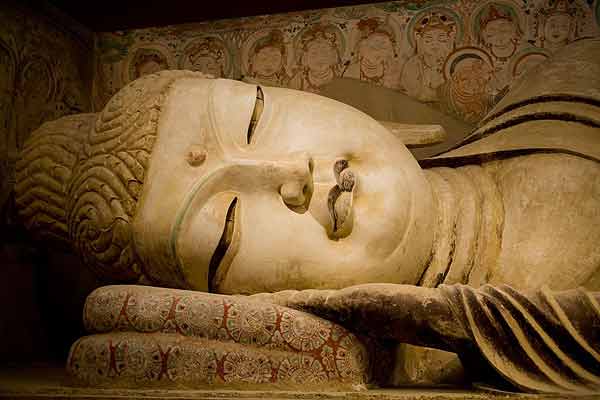“Look at me. Behold, encounter, and meet me.” Two of my favourite expressions of sacred art can be found in Cave 148 at the Mogao Grottoes at Dunhuang, along the Chinese route of the Silk Road, and the beloved icon of the Holy Trinity in the Orthodox Church. While all art forms of the holy presume some form of physical or emotional engagement with the devotee or viewer, these two specific artistic forms demand to meet your eyes, quite literally. For the eyes are windows to the soul (figuratively in the Buddhist mind), and what better to invite human wonder and devotion than for the divine itself to meet our eyes?

The Buddha in Cave 148 is of Shakyamuni Buddha, the historical Buddha of our world-system. He is in his state of Parinirvana, in a position of final repose as he leaves the world of existence and non-existence tracelessly. His head and body are massive, dwarfing the visitors that shuffle into the yawning, man-made cavern. Move slightly to the left or right of the Buddha’s head, and you will see something extraordinary – the Buddha gazing at you tranquilly, eyes shifting, silently attentive to your presence. It is an intentional illusion put in place by the long-gone sculptor – one that goes a step beyond the usual Dunhuang setup of having the Buddhas and bodhisattvas “meet” your gaze when you prostrate before them (there are several caves with statues that do this). That is, after all, the position you should approach the enlightened ones with.
There is no concept of Original Sin in the Orthodox Church – a concept that has plagued the Latin Church with guilt for more than a thousand years. The Trinitarian motif is also, I find, far more affirming than the Western Church. Three angels are seated at table, representing the Three Persons in One God. Yet there is an empty seat at the table, the one that is closest to the viewer. The viewer is invited to join the Father, Son, and Holy Ghost at the table, in full communion. Only then will the feast be complete.
Holy art that meets the viewer’s gaze with its own invokes the meeting between mortal creatures of decay and consecrated eyes. This art compels confession and conversion. It transforms lives and makes us aware of the greater forces behind them: presences beyond the stars and outside of the universe. Where their eyes wander, we scramble to go too.

